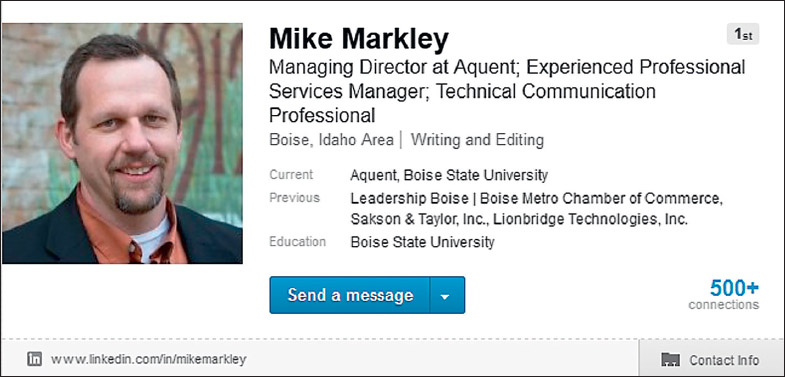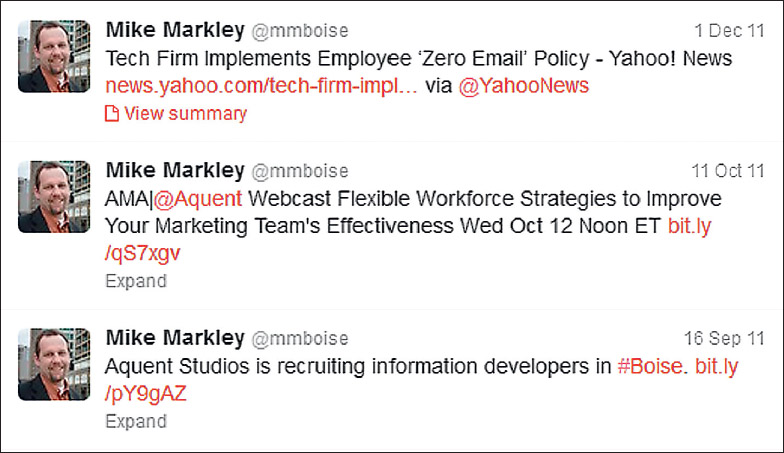Techniques for Learning About Your Audience
Printed Page 91-95
Techniques for Learning About Your Audience
To learn about your audience, you figure out what you do and do not already know, interview people, read about them, and read documents they have written. Of course, you cannot perform extensive research about every possible reader of every document you write, but you should learn what you can about your most important readers of your most important documents.
DETERMINING WHAT YOU ALREADY KNOW ABOUT YOUR AUDIENCE
Start by asking yourself what you already know about your most important readers: their demographics (such as age, education, and job responsibilities); their expectations and attitudes toward you and the subject; and the ways they will use your document. Then list the important factors you don’t know. That is where you will concentrate your energies. The audience profile sheet shown in Figure 5.2 can help you identify gaps in your knowledge about your readers.
INTERVIEWING PEOPLE
For your most important readers, make a list of people who you think have known them and their work the longest or who are closest to them on the job. These people might include those who joined the organization at about the same time your readers did; people who work in the same department as your readers; and people at other organizations who have collaborated with your readers.
For a discussion of interviewing, see Ch. 6.
Prepare a few interview questions that are likely to elicit information about your readers and their preferences and needs. For instance, you are writing a proposal for a new project at work. You want to present return-on-investment calculations to show how long it will take the company to recoup what it invested, but you’re not sure how much detail to present because you don’t know whether an important primary reader has a background in this aspect of accounting. Several of this reader’s colleagues will know. Interview them in person, on the phone, or by email.
READING ABOUT YOUR AUDIENCE ONLINE
If you are writing for people in your own organization, start your research there. If your primary reader is a high-level manager or executive, search the organization’s website or internal social network. Sections such as “About Us,” “About the Company,” and “Information for Investors” often contain a wealth of biographical information, as well as links to other sources.
In addition, use a search engine to look for information on the Internet. You are likely to find newspaper and magazine articles, industry directories, websites, and blog posts about your audience.
SEARCHING SOCIAL MEDIA FOR DOCUMENTS YOUR AUDIENCE HAS WRITTEN
Documents your readers have written can tell you a lot about what they like to see with respect to design, level of detail, organization and development, style, and vocabulary. If your primary audience consists of those within your organization, start searching for documents they’ve produced within the company. Then broaden the search to the Internet.
Although some of your readers might have written books or articles, many or even most of them might be active users of social media, such as Facebook. Pay particular attention to LinkedIn, a networking site for professionals. LinkedIn profiles are particularly useful because they include a person’s current and former positions and education, as well as recommendations from other professionals. Figure 5.3 is an excerpt from the LinkedIn entry written by Mike Markley, a technical communicator at Aquent.

Figure 5.3 A Linkedin Bio
Markley begins his LinkedIn biography with these paragraphs:
Mike Markley serves as Managing Director for Aquent Studios, a professional services firm, and manages a team of technical communicators, designers, project managers, and account managers throughout the United States and India. Prior to joining Aquent, he worked at Micron Technology and Lionbridge in multiple content development and management roles.
Mike holds a Bachelor of Science degree in Communication from University of Idaho and a Master of Arts in Technical Communication from Boise State University, where he currently serves as an adjunct instructor of technical communication.
These two paragraphs suggest a couple of points about Markley’s credentials:
- He has an extensive background, not only in writing and editing but also in various levels of management. You can expect that he knows project management, budgeting, and human resources. He understands both how to make documents and how to lead teams that make documents.
- He has experience overseeing project teams in India. This experience gives him a broad perspective not only on how two very different cultures see the world but also on how to supervise people from other cultures so that they work effectively and efficiently.
In short, when you read Markley’s comments on LinkedIn, you get the clear impression that he is an experienced, versatile, and highly respected technical communicator.

Figure 5.4 Excerpt from a List Of Tweets
A typical LinkedIn entry directs you to a person’s websites and blogs and to the LinkedIn groups to which the person belongs. You can also see the person’s connections (his or her personal network). And if you are a LinkedIn member, you can see whether you and the person share any connections.
In addition, the person you are researching might have a social-media account on which he or she posts about matters related to his or her job. Reading a person’s recent posts will give you a good idea of his or her job responsibilities and professionalism, as shown in Figure 5.4.
ANALYZING SOCIAL-MEDIA DATA
Private companies and public agencies alike analyze social media to better understand their audiences. Private companies use these data primarily to determine who their customers are, how they feel about various marketing messages, and how these messages influence their buying behavior. Public agencies use these data to help them refine their own messages.
For instance, the Centers for Disease Control and Prevention (CDC), a U.S. federal agency, analyzes social media to improve the quality and effectiveness of its public health information. The agency starts by classifying people into various categories by age (such as tweens, teens, baby boomers) and determining which media each group uses most. On the basis of these data, the agency designs and implements health campaigns on such topics as cancer screening, HIV/AIDS prevention and treatment, vaccines, and smoking cessation.
Then the CDC monitors social media to determine how many people are seeing the agency’s information, how they are engaging with the information (whether they share the information or follow links to other sites), and whether the information is changing their behavior (Centers for Disease Control, 2013). Among the data the CDC analyzes each month are the following:
- the number of visitors to each of the CDC web pages
- the most popular keywords searched on CDC pages as well as on selected other sites and popular search engines such as Google
- the numbers of Facebook fans and Twitter followers
- the number of click-throughs to CDC web pages from Facebook and Twitter
On the basis of these data, the CDC adjusts its social-media campaigns to use its campaign resources most effectively.